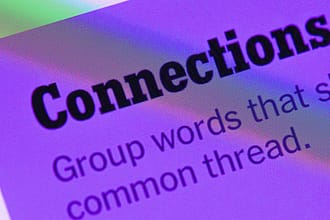Google almost got it right with the first Pixel Fold.
As Google unveils its latest foldable, the Pixel 10 Pro Fold, at this year’s Made by Google event, I keep thinking about the original Pixel Fold. Released in 2023, it was far from a perfect phone. It was underpowered, had a thick inner bezel and couldn’t open completely flat. Even then, it was a beautiful device with a shiny stainless steel chassis that felt substantial in the hand. Not only that, it was wide. The passport-like form factor made it squat in comparison to slab-style iPhones and Galaxys, but when opened up, it had an almost TV-like 17:9 aspect ratio.
Then, with the Pixel 9 Pro Fold the following year, Google threw out the Moleskine for Galaxy Z Fold-style safety.
The Pixel 9 Pro Fold axed its predecessor’s passport-like form factor for a slab that happened to fold open. Literally, the Pixel 9 Pro Fold had the same outer screen aspect ratio as the Pixel 9 Pro. Here, Google was folding (no pun intended) to industry trends, following similar form factors of the Galaxy Z Fold 6, OnePlus Open, Xiaomi’s MIX Fold 4 and others.
Apart from the first Pixel Fold, the only other phone to go squat and wide was the first Oppo Find N from 2021. YouTuber Marques Brownlee went so far as to call it the best folding phone, in terms of form factor. Since then, Oppo dropped the passport for a folding slab, as can be seen with the Oppo Find N5.
Why all foldables look the same
A major reason all foldable phone makers have adopted a similar form factor is app support. The outer display on the Samsung Galaxy Z Fold 7 has a more typical slab phone aspect ratio, meaning apps better conform to its standard smartphone-like screen. And when opened, loading up two apps side-by-side fits well on what’s essentially a long rectangle.
“That’s what led us to say, ‘Hey, we need to make this a phone first in terms of design,'” Claude Zellweger, Google’s director of industrial design, said in a 2024 blog post about the Pixel 9 Pro Fold.
The other issue is Android’s limited app support for tablets. The iPad, which has strong support from Apple, sells well and gets plenty of app updates to support its wider form factor. The same can’t be said for Android tablets. Many Android apps aren’t optimized for wider tablet aspect ratios. It’s a recurring complaint from fans and tech columnists. It doesn’t help that Google hasn’t put in a strong effort in the tablet space either, with the company axing its Pixel Tablet line after just one attempt.
So, when you tried to run Reddit or some other popular third-party apps on the Pixel Fold’s wide screen, the app would have black bars on both sides, essentially running in the same aspect ratio as a typical phone. This problem persists on taller foldables as well; it just isn’t as prominent.
Who’ll make a foldable that gets it right?
Despite the anemic support for tablet apps, I’d love to see a foldable phone with the measurements of the Microsoft Surface Duo. Released in 2020, it was a half-step toward what foldable phones are today. Instead of having a foldable inner display, it was two screens bisected by a hinge. It really felt like holding a metal and glass Moleskine notebook. The inner two displays on the Surface Duo had a 4:3 aspect ratio, which is also square-like. This is largely due to its chunky inner bezels. Foldable screen tech has come a long way since. Assuming Microsoft were to make a true foldable in 2025 with minimal bezels, the inner display could have a wide 24:9 aspect ratio. It would be a beastly device for watching YouTube, Netflix or playing games. And rotating it would feed my eyes an endless scroll of Instagram Reels brainrot.
The likelihood of any foldable phone-maker bisecting a 16:9 or 21:9 screen is slim. Honestly, if any phone-maker could do something so daring, it’d be Apple. Rumors have been floating for some time that Apple is working on a clamshell-like foldable for 2027. If Apple does decide to jump into the world of book-style foldables, thanks to the iPad, a wide foldable iPhone would be ready to go without the need for developers to massively overhaul their apps. Assuming Apple does do a squat and wide foldable, that move would likely prompt the rest of the smartphone market to (again, I apologize for the pun), fold.




